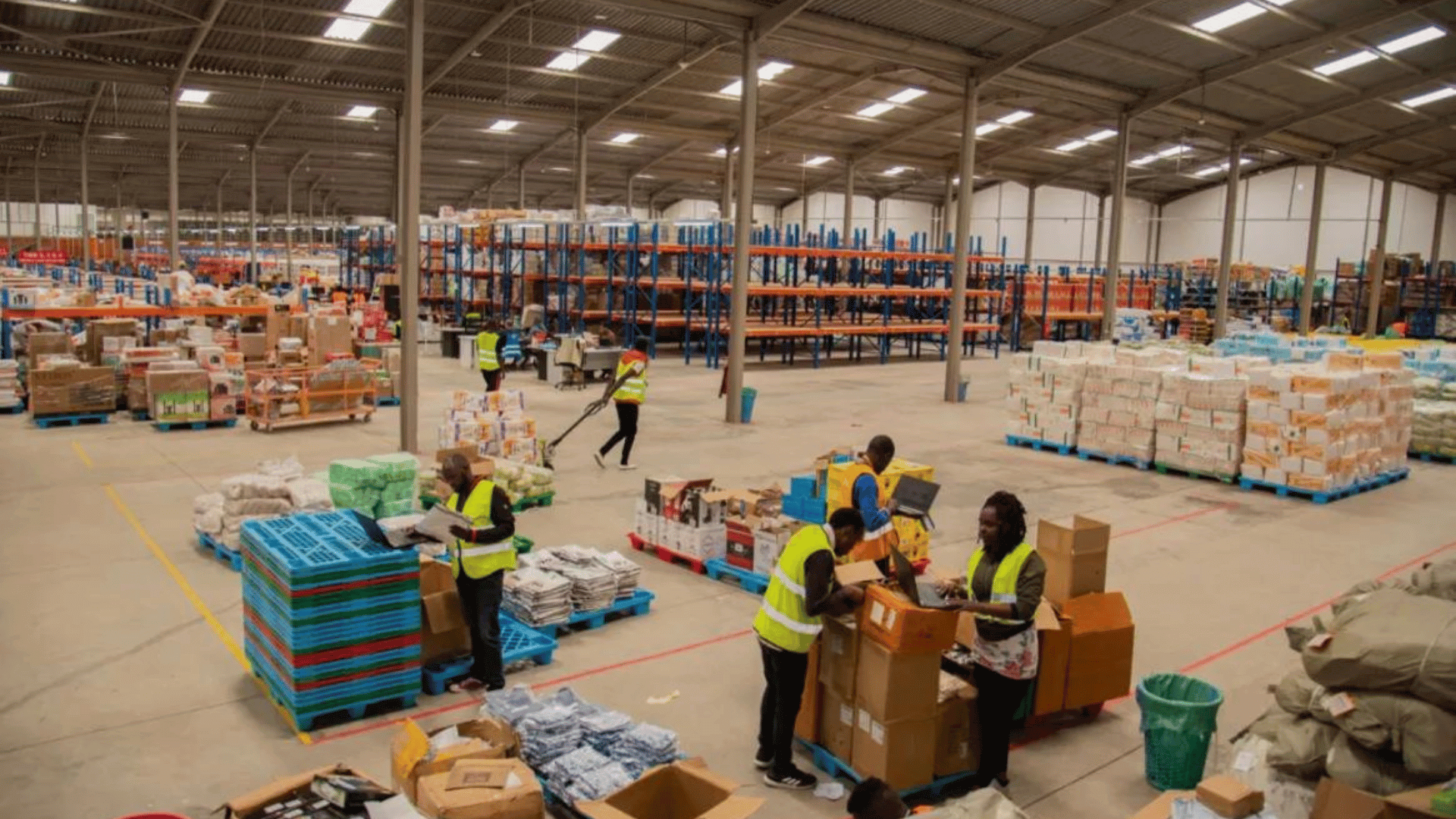News
Jumia reports GMV growth in physical goods across five countries and lowest losses since IPO (TechCrunch)
November 15, 2023Company News

In Q3 2023, Jumia reported an adjusted EBITDA loss of $15 million, marking the lowest since its IPO in 2019 (outperforming the $27 million recorded in Q1 and $19.3 million in Q2) and a substantial decrease of $32 million compared to Q3 2022. This represents a 67% year-over-year decline and a 70% reduction on a constant currency basis. Year-to-date, the adjusted EBITDA loss stands at $61 million, down by 61% from the first nine months of 2022.
Jumia has also taken strategic actions resulting in a notable improvement in liquidity, with a reduction in its position of $19 million in Q3 2022, a 71% year-over-year decrease, compared to a decrease of $66.0 million in the third quarter of 2022.
Other key financial highlights include an 11% year-over-year decrease in revenue to $45 million, a 19% increase on a constant currency basis and a GMV of $181 million, declining by 25% year-over-year but up 3% on a constant currency basis. Quarterly active customers and orders also reduced compared to this time last year. Jumia’s customers sit around 2.3 million, down 24.3% from Q3 2022, and received 7.2 million orders, down 23% compared to Q3 2022, from these customers.
Meanwhile, sales and advertising expenses also reduced by 74% year-over-year, to $4.3 million in the third quarter of 2023, as the company continues to bring discipline to its marketing investments. And there’s the operating loss of $19 million compared to $43 million in the third quarter of 2022, down 57% year-over-year.
Activities behind the numbers
These figures align with Jumia’s ongoing commitment to more robust fundamentals for growth in core categories. Notably, there has been a significant reduction in active customers and orders compared to the previous year, a deliberate outcome of the company’s strategic streamlining initiatives initiated in Q4 2022. The e-commerce giant intentionally decided to recalibrate its product and service portfolio as part of these efforts. This included suspending its first-party grocery offering, logistics-as-a-service and food delivery operations in specific vital markets where economic viability was deemed unsustainable.
Furthermore, the decline in numbers and GMV can be attributed to various macroeconomic conditions: high inflation notably impacting customers’ purchasing power, while import restrictions limiting retailers’ ability to acquire products. The average inflation level across Jumia’s footprint is 13.5%, with countries like Ghana, Egypt and Nigeria experiencing record-high inflation and currency devaluations this year.
However, the decrease in usage, approximately 100,000 from Q2 2023 to the third quarter, is attributed to a different factor, according to the company: Q3 seasonality, which involves long holidays and back-to-school expenditures impacting households’ budgets, which is typically less favorable than Q2 in core categories like phones, electronics, home and living, and fashion and beauty. Unlike the previous quarter, the company highlighted the absence of promotional activities in Q3.
GMV growth of physical goods in five countries
Despite declining user numbers compared to the previous quarter, there was a positive 11% increase in orders for Jumia from Q2 to Q3 2023. This growth is attributed to a rise in Jumia Pay App orders, mainly due to promotional activities in digital categories such as airtime. Physical goods orders remained nearly stable quarter over quarter, experiencing only a 1% decline.
That brings us to what CEO Francis Dufay, on a call with TechCrunch, describes as the main highlight in the company’s Q3 2023: the GMV of physical goods increasing in five countries year-over-year.
“The news this quarter is that we’re still making significant progress on profitability and cash preservation. That’s very important, seeing the impact of our growth strategy because we now have an evident and tangible impact across countries that we can share,” Dufay commented.
“For example, we have growth in some of the 11 countries in the physical goods segment. We have GMV growth over five countries now versus last year, which is very positive news because it’s compared with the year when we had way bigger losses and three times more marketing budgets. The fact that we can drive growth again in five countries with much more efficient economics is welcome proof that our strategy is working and gives us a lot of confidence for the other countries to follow the same path.”
The growth in GMV for physical goods, identified as Jumia’s core business by Dufay, was evident in Ghana, Uganda and Senegal (Dufay did not disclose the other two countries). These five countries collectively contribute 49% of the overall GMV for physical goods, approximately half of Jumia’s business scope.
Overall, though, Jumia observed a year-over-year decline in GMV in its core e-commerce business of physical goods by 17% in actual dollars but a 10% increase on a constant currency basis. According to Dufay, the number of orders for physical goods is relatively stable, but the average order value improved compared to Q3 2022. This is primarily attributed to efforts in core categories such as phones, electronics, home living, fashion and beauty. By bringing in better assortments, brands and sellers in these categories are witnessing an improvement in average order value and facilitating improved repurchase rates, driven by the attractiveness of assortment rather than increased marketing spend.
Dufay said that Jumia’s partnership with Starlink in October is crucial to the e-tailer’s overall strategy to brush up its assortment, supply and brand offerings, adding that Jumia wants to become the preferred distributor for international brands, bringing a diverse and updated product range to Africa. “We plan to start distributing the residential kits of Starlink in Nigeria in the coming weeks by the end of the year. And we’re discussing expansion towards other countries in Africa. It’s not yet impacting the business, but it’s a great opportunity and partnership where both sides can add much value.”
Meanwhile, Jumia’s total payment volume (TPV) amounted to $48.1 million in Q3 2023, marking a 28% year-over-year decrease yet showing a 3% increase on a constant currency basis. During the same period, TPV as a percentage of GMV remained steady at around 27%, maintaining its stability from the third quarter of 2022. Notably, JumiaPay transactions recorded a positive trend, reaching 3.2 million in Q3 2023, reflecting an 8% year-over-year growth. An impressive 44.7% of orders placed on the Jumia platform in Q3 2023 were executed using JumiaPay, compared to 31.9% in Q3 2022.
Concluding on the same note as started, Jumia has revised its guidance for adjusted EBITDA losses. From the initial Q1 2023 prediction of $100-120 million and the Q2 adjustment to $90-100 million, the current target is between $80 million and $90 million. This signifies a 57% to 61% year-over-year reduction in adjusted EBITDA loss if successfully achieved. The favorable financial outlook contributed to a 7.5% surge in Jumia’s stock on Wednesday, reflecting heightened investor confidence.
Read the original article on TechCrunch
About Jumia
Jumia is a leading e-commerce platform in Africa. Our marketplace is supported by our proprietary logistics business, Jumia Logistics, and our digital payment and fintech platform, JumiaPay. Jumia Logistics enables the seamless delivery of millions of packages while JumiaPay facilitates online payments and the distribution of a broad range of digital and financial services.
Follow us on, Linkedin Jumia Group and X @Jumia_Group
For more information about Jumia:
Abdesslam Benzitouni
[email protected]

